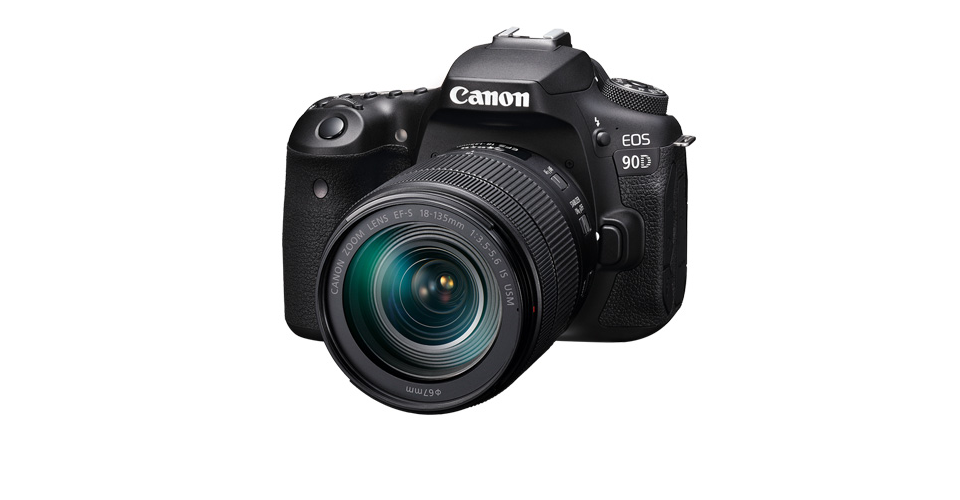6 Best Canon 90D Lenses in 2020
Canon’s 90D is proof that DSLRs still have a lot to offer. It combines class-leading image quality and vlogger-friendly video features into a contemporary camera that’s hard to resist. A kit lens will only get you so far, though, which is why you’ll want to invest in an upgrade as soon as possible.
Here are the six best Canon 90D lenses on offer right now. We’ve covered all the bases and included premium picks for everything from wildlife and street photography to landscapes and vlogs. Take a look at what’s on offer and experience what a combination of top-tier camera and versatile lens can do.
| Budget |
|---|
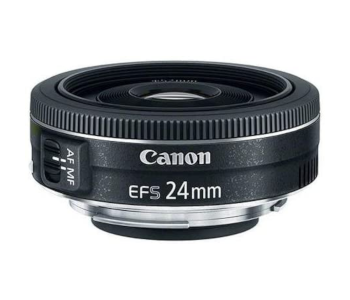 |
| Canon EF-S 24mm f/2.8 STM |
| 4.3/5.0 |
| Type: Wide-angle prime |
| Image stabilization: No |
| Excellent sharpness from corner to corner. |
| Check Amazon |
| Best Value |
|---|
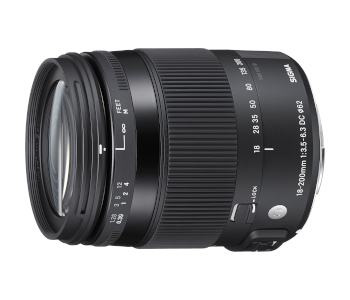 |
| Sigma 18-200mm F3.5-6.3 DC Macro OS HSM |
| 4.4/5.0 |
| Type: All-in-one zoom |
| Image stabilization: Yes |
| Accurate autofocus, light and compact. |
| Check Amazon |
| Top Pick |
|---|
 |
| Canon EF-S 17-55mm f/2.8 IS USM |
| 4.6/5.0 |
| Type: Standard zoom |
| Image stabilization: Yes |
| Has balanced optical properties. |
| Check Amazon |
Canon 90D Lenses Comparison Table
| Image | Product | Overall Rating | Image quality | Build quality | Features | Price |
|---|---|---|---|---|---|---|
 | Canon EF-S 17-55mm f/2.8 IS USM | 4.6 | 4.5 | 4.5 | 4.7 | Check Price |
 | Sigma 18-200mm F3.5-6.3 DC Macro OS HSM | 4.4 | 4.4 | 4.4 | 4.5 | Check Price |
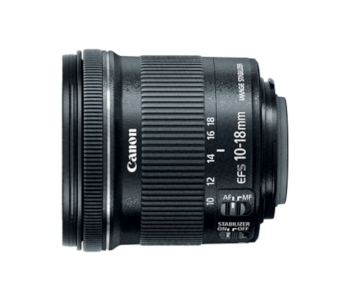 | Canon EF-S 10-18mm f/4.5-5.6 IS STM | 4.5 | 4.5 | 4.4 | 4.5 | Check Price |
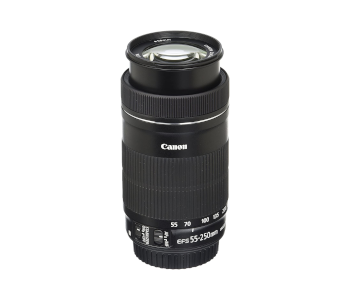 | Canon EF-S 55-250mm F4-5.6 IS STM | 4.4 | 4.3 | 4.4 | 4.6 | Check Price |
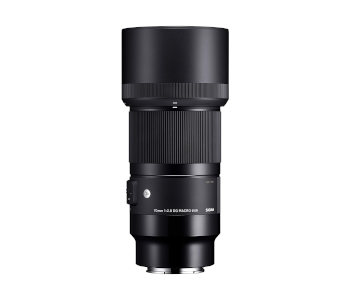 | Sigma 70mm F2.8 Art DG Macro | 4.5 | 4.7 | 4.6 | 4.2 | Check Price |
 | Canon EF-S 24mm f/2.8 STM | 4.3 | 4.4 | 4.2 | 4.2 | Check Price |
1. Best Overall – Canon EF-S 17-55mm f/2.8 IS USM
Editor’s Rating: 4.6/5
The 17-55mm f/2.8 IS USM has two things going for it – a wide max aperture and a focal length that should cover most of your needs. It’s a bright lens you’ll love using for anything from landscapes to food or indoor wedding photography. It snaps to attention almost instantly and is even stabilized to give you a better chance of landing that perfect shot either in unfavorable light or without using a tripod.
Overview of Features
This standard zoom lens is neither light nor small for one intended solely for Canon-Saps-c BODIES. You can thank 19 glass elements in 12 groups, including aspherical and low dispersion ones that tackle flaring. A polycarbonate body helps control the weight and feels well put together despite not being metal. Thankfully, the mount isn’t plastic, so you don’t need to worry about the ingress of dust and wear.
We were thoroughly satisfied with the 17-55mm f/2.8 IS USM’s autofocus performance. An ultrasonic ring motor drives it with exceptional speed and accuracy. Getting subjects into focus takes 0.2 seconds in ideal conditions and not much more if you’re shooting indoors. The focus ring is narrow and has no hard stops, which might make focusing manually more challenging. Internal image stabilization promises three stops of correction.
Camera sensors couldn’t take full advantage of the 17-55mm f/2.8 IS USM’s sharpness upon its release, but the lens shines when paired with the 90D. Consistent uniformity is its most impressive feature as the same pattern repeats itself throughout the focal length. It will start out sharp in the middle with the corners & edges trailing behind slightly, only to catch up by f/5.6. You’ll love using it at f/8 and f/11 too, but narrower apertures take a hit in quality because of diffraction.
The 17-55mm f/2.8 IS USM’s bright aperture lets you pull off dreamy background blur with muddied but pleasant-looking highlights. Chromatic aberration is a minor issue, as is one stop of vignetting at 17mm f/2.8. The lens shows few artifacts when shooting into the sun.
What We Didn’t Like
The 17-55mm f/2.8 IS USM doesn’t have many flaws. It shows a moderate amount of barrel distortion at 17mm and transitions to some pincushion distortions from 24mm onward. Both are easy to correct. Canon hasn’t included a lens hood with your purchase. You’ll want to get one separately, especially if you’re planning on working a lot outdoors.
| Tech Specs |
|---|
| Dimensions: 3.3 x 3.3 x 4.4 in. |
| Weight: 1.4 lbs. |
| Type: Standard zoom |
| Minimum focal length: 17mm |
| Maximum focal length: 55mm |
| Maximum aperture: f/2.8 |
| Minimum aperture: f/22 |
| Minimum focus distance: 1.2 ft. |
| Viewing angles: 78° 30′ to 27° 50′ |
| Image stabilization: Yes |
| Pros |
|---|
| Bright constant max aperture |
| Fast and accurate autofocus |
| Uniform sharpness |
| Balanced optical properties |
| Cons |
|---|
| Moderate barrel distortion |
| Doesn’t come with lens hood |
2. Best Value – Sigma 18-200mm F3.5-6.3 DC Macro OS HSM
Editor’s Rating: 4.4/5
Canon’s APS-C all-in-one lenses are nothing to write home about, so our value pick goes to Sigma. Its 18-200mm F3.5-6.3 DC Macro OS HSM is a versatile performer that leverages a long zoom range and near-macro capabilities to outclass the competition. It’s compact for its class, built well, and comes in at a reasonable price. What more could you want?
Overview of Features
You’ll love to use the 18-200mm F3.5-6.3 DC Macro OS HSM as a walk around lens due to its low weight and small form factor. It balances well on the 90D and doesn’t make the camera top-heavy. Two switches toggle the focus mode and image stabilization while a third one locks the lens at 18mm to prevent it from sliding out during transit. Despite its lightness, the lens feels built to last.
The Canon variety of this lens uses a micro motor to drive the autofocus. It’s an accurate performer that snaps to subjects and keeps them sharp in a variety of circumstances. However, it doesn’t do well in low light, especially if you’re shooting at its telephoto end. Focusing manually isn’t possible in AF mode and leads to considerable resistance from the narrow ring. Manual operation requires finesse since the ring has a short throw.
The 18-200mm F3.5-6.3 DC Macro OS HSM’s sharpness follows an intriguing curve. Its top performance happens at 18mm, where the center is sharp and gets even more so as you step down. There’s a disparity between it and the edges & corners that gets smaller with decreasing aperture but always lags noticeably behind. Sharpness takes a dip at 35mm only to recover at 75mm and then worsen slightly at max focal length. Keep the lens at f/8 for optimum results.
Chromatic aberration is negligible for all but the most contrast-heavy themes. A reversible hood and several of the 16 glass elements improve flare resistance, while bokeh looks nice for a narrow max aperture lens. A close focusing distance of 1.3 feet and a magnification ratio of 1:3 make this lens an adequate substitute for an actual macro model in a pinch.
What’s Bad About It?
The 18-200mm F3.5-6.3 DC Macro OS HSM is a great choice for portraits, food, and macro photography. 90D owners interested in city life or other types of photography where the entire frame needs to be as sharp as possible may find its soft corners off-putting. The lens exhibits both varieties of distortion in moderate amounts, depending on the focal length.
| Tech Specs |
|---|
| Dimensions: 2.8 x 2.8 x 3.4 in. |
| Weight: 1.3 lbs. |
| Type: All-in-one zoom |
| Minimum focal length: 18mm |
| Maximum focal length: 200mm |
| Maximum aperture: f/3.5 to 6.3 |
| Minimum aperture: f/22 |
| Minimum focus distance: 1.3 ft. |
| Viewing angles: 76.5° to 8.1° |
| Image stabilization: Yes |
| Pros |
|---|
| Excellent value for the money |
| Versatile thanks to wide focal length and macro capabilities |
| Accurate autofocus |
| Light and compact |
| Cons |
|---|
| Soft corners regardless of focal length or aperture |
| Moderate barrel and pincushion distortions |
3. Canon EF-S 10-18mm f/4.5-5.6 IS STM
Editor’s Rating: 4.5/5
The 90D’s flip-out screen and above-average video quality make it a prime choice for vloggers, and the EF-S 10-18mm f/4.5-5.6 IS STM is the best vlogging lens for it you can get. Its wide-angle coverage is ideal for travel shots or capturing yourself and your surroundings. Its autofocus is silent, and sharpness is outstanding across the board.
Overview of Features
The EF-S 10-18mm f/4.5-5.6 IS STM is a lightweight wide-angle zoom lens that balances well on the 90d thanks to its square profile. It’s made from high-quality plastic and feels solid even though it has a plastic bayoneted mount. The zoom ring is ridged and accompanied by clear white focal length markings. The lens doesn’t rotate while focusing and accepts 67mm polarizers.
Vloggers will love the EF-S 10-18mm f/4.5-5.6 IS STM’s stepping motor as it handles focusing with accuracy and silence. The lens is almost parfocal, meaning it stays focused as you zoom in and out. Its max aperture isn’t the brightest, but you’ll experience minimal hunting in low light. Manual focus isn’t as satisfying since the ring is narrow and doesn’t work in AF mode. Wide-angle lenses usually don’t have image stabilization. Adding it here was a smart move since it lets you shoot handheld photos or videos with three stops of correction.
The EF-S 10-18mm f/4.5-5.6 IS STM starts tack-sharp in the middle and remains that way as you zoom in and step down to f/16. Edges and corners aren’t as well-defined at max aperture. They quickly catch up, though. The lens’s sweet spot is between f/5.6 and f/8 and shifts towards the latter as you increase the focal length.
We were pleased with the EF-S 10-18mm f/4.5-5.6 IS STM’s low levels of CA. Worst-case examples show less than a pixel’s width of fringing at the frame’s outer limits, which is negligible. Moderate barrel distortion is an expected issue that’s easy to correct. Flares and artifacts are few and far between.
Are There Drawbacks?
The EF-S 10-18mm f/4.5-5.6 IS STM experiences moderate light falloff at 10mm that persists throughout the zoom range at max aperture. This lens would greatly benefit from a lens hood, which you will need to buy separately.
| Tech Specs |
|---|
| Dimensions: 2.9 x 2.9 x 2.8 in. |
| Weight: 8.9 oz. |
| Type: Wide-angle zoom |
| Minimum focal length: 10mm |
| Maximum focal length: 18mm |
| Maximum aperture: f/4.5 to 5.6 |
| Minimum aperture: f/22 to 29 |
| Minimum focus distance: 8.7 in. |
| Viewing angles: 107° 30′ to 74° 20′ |
| Image stabilization: Yes |
| Pros |
|---|
| Fantastic choice for vloggers |
| Admirable sharpness |
| Controlled chromatic aberration |
| Has image stabilization |
| Cons |
|---|
| Doesn’t come with lens hood |
| Moderate vignetting at 10mm f/4.5 |
4. Canon EF-S 55-250mm F4-5.6 IS STM
Editor’s Rating: 4.4/5
Canon’s streak of high-quality, low-priced APS-C lenses continues with a versatile telephoto – the EF-S 55-250mm F4-5.6 IS STM. It has a 35mm equivalent focal range between 88 and 400mm, letting you snap alluring portraits or close-up photos of far-away birds. It’s portable for a telephoto, has outstanding sharpness, and it’s suitable for nature documentaries due to the silent AF motor.
Overview of Features
The all-black, all-plastic EF-S 55-250mm F4-5.6 IS STM is remarkably light for a telephoto lens and shouldn’t hinder you from shooting with the 90D all day long. Its straightforward outer appearance hides 15 glass elements in 12 groups, and the lens manages to stay slim because of its polycarbonate body. This includes the mount.
The EF-S 55-250mm F4-5.6 IS STM uses the same kind of stepping motor as the wide-angle lens reviewed above. You can expect similarly quick response times and silent operation perfect for recording video. Image stabilization is present and more advanced since it compensates for four stops. This allows you to snap images with exposure times as long as a fourth of a second and partially overcome the lens’s low-light limitations.
Central sharpness consistency is the best thing about the EF-S 55-250mm F4-5.6 IS STM. It’s a testament to Canon’s engineers that zooming in or stepping down has minimal impact on the central third’s contrast and clarity. The periphery and edges aren’t as uniform. However, soft is a term we’d only reserve for corner performance at 135mm f/5.
Other optical properties are well-rounded. The little distortion you’ll experience isn’t worth correcting, even if the shot features lots of straight lines. Vignetting is more artistic than concerning, and the smoothness of background blur transitions is satisfactory. You’ll have to look long and hard to detect color fringing, which is rarely an issue and less than a pixel wide if it does show up.
What We Didn’t Like
The EF-S 55-250mm F4-5.6 IS STM performs well in bright conditions but struggles to acquire and maintain focus in dim light. It’s another lens that doesn’t come with a hood.
| Tech Specs |
|---|
| Dimensions: 2.8 x 2.8 x 4.4 in. |
| Weight: 13.2 oz. |
| Type: Wide-angle zoom |
| Minimum focal length: 55mm |
| Maximum focal length: 250mm |
| Maximum aperture: f/4 to 5.6 |
| Minimum aperture: f/22 to 32 |
| Minimum focus distance: 2.8 ft. |
| Viewing angles: 27° 50′ to 6° 15′ |
| Image stabilization: Yes |
| Pros |
|---|
| Portable and balanced considering its focal length |
| Silent autofocus great for nature documentaries |
| Excellent central sharpness |
| No issues with distortion, light falloff, or CA |
| Cons |
|---|
| No lens hood included |
| Mediocre low-light performance |
5. Sigma 70mm F2.8 Art DG Macro
Editor’s Rating: 4.5/5
We’ve mentioned several lenses in the 90D’s lineup you could use for macro photography, but nothing beats a dedicated model like the 70mm F2.8 Art DG Macro from Sigma. It’s a full-frame model that performs well on APS-C cameras since its 112mm equivalent focal range is ideal for pictures of small creatures and items. The lens is wickedly sharp, built to last a lifetime, and not overly expensive to boot.
Overview of Features
The Canon version of the 70mm F2.8 Art DG Macro is short at 4.2 inches compared to 7.5 for Sigma and Leica models. It’s made from a mixture of metal, polycarbonate, and TSC or Thermally Stable Compound. The mount is brass and located behind a metal ring that extends the back-most glass element to an optimal position in front of the 90D’s sensor. A rubber gasket ensures no dust or sand will damage the lens’s internal components. A large circular hood is part of the package.
The lens uses a new type of coreless DC motor for autofocus. Unlike most original Canon models, it has full manual focus override. Speed isn’t the 70mm F2.8 Art DG Macro’s strong suit. You can still improve its performance by setting the limiter to either cover values between the minimal focusing distance and 0.5m or 0.5m to infinity. The focus ring allows for precise calibration. However, it takes several turns to go from 10.2 inches to infinity, so use the autofocus first to get closer to your desired distance.
The 70mm F2.8 Art DG Macro is among the sharpest lenses we’ve reviewed, period. There’s no impactful difference between the clarity of its center and corners, so feel free to use the lens for tight-angle landscapes or architectural photography. There’s a slight dip in quality at f/4 that quickly disappears by switching to f/5.6. You can keep stepping down the lens until f/22 and get crisp, consistent results at any aperture.
Chromatic aberration and distortion are nowhere to be seen, while a series of complex glass and the deep hood give the lens ample flare protection. Bokeh is well-defined and lacks harsh edges or onion ring patterns.
What’s Bad About It?
The 70mm F2.8 Art DG Macro lacks image stabilization, which could prove problematic since the 90D doesn’t have it either. Tamron’s SP 90mm f/2.8 Di Macro is a worthy alternative if this is a deal-breaker for you. There’s close to three stops of light falloff at f/2.8. You can either lose out on bokeh quality by narrowing the aperture or introduce noise in the corners by making them brighter in Lightroom.
| Tech Specs |
|---|
| Dimensions: 2.8 x 2.8 x 4.2 in. |
| Weight: 1.1 lbs. |
| Type: Macro lens |
| Focal length: 70mm |
| Maximum aperture: f/2.8 |
| Minimum aperture: f/22 |
| Minimum focus distance: 10.2 in. |
| Viewing angles: 34.3° |
| Image stabilization: No |
| Pros |
|---|
| Outstanding sharpness from corner to corner |
| Great build quality and lens hood |
| No distortion |
| Creates beautiful bokeh |
| Cons |
|---|
| No image stabilization |
| Pronounced vignetting at f/2.8 |
6. Best Budget Option – Canon EF-S 24mm f/2.8 STM
Editor’s Rating: 4.3/5
90D owners interested in street photography and adding context to their portraits will find that the EF-S 24mm f/2.8 STM and their camera are a match made in heaven. This is Canon’s only APS-C prime lens, and it’s built with portability and remarkable sharpness in mind. Add to that its bargain bin price, and you’ve got a lens that should be an essential part of your kit.
Overview of Features
The EF-S 24mm f/2.8 STM is a wide-angle pancake prime with a focal length equivalent of 38m. It adds barely any weight and depth to the 90d but doesn’t lack build quality, as evidenced by the metal mount. It was made specifically for APS-C cameras like the 90D and won’t fit Canon’s 35mm models.
A geared stepping motor is in charge of the autofocus and performs accurately. It’s not silent, but your microphone shouldn’t pick up its movement if you’re out and about. This makes the EF-S 24mm f/2.8 STM an excellent choice as a vlogging lens. Keep in mind that the autofocus does hunt and isn’t the fastest on review. You may use manual focusing by turning the narrow ring instead, provided you’ve flipped the switch to MF since manual adjustments in auto mode aren’t supported.
Uniform sharpness is the EF-S 24mm f/2.8 STM’s greatest asset. F/2.8 already shows strong central results with edges and corners not far behind. Switching to f/4 brings sharpness to peak values. Diffraction creates minor drops in quality from f/5.6 to f/11 and becomes detrimental to image quality past f/16.
The lens shows minimal barrel distortion. Chromatic aberration is subdued and limited to the frame’s edges in high-contrast situations. You can achieve a shallow depth of field with accompanying creamy bokeh and blurry backgrounds with smooth transitions. A focusing distance of 6.3 inches lets you snap macro-like images and even achieve larger-than-life magnification if you purchase an extender.
Are There Drawbacks?
The EF-S 24mm f/2.8 STM is susceptible to flare and shows large artifacts when the sun is in your shot. A lens hood isn’t included either, so you’ll have to pay attention to composition to compensate. There’s noticeable light falloff at f/2.8. It goes away if you step down to f/5.6 or apply the right correction in Lightroom.
| Tech Specs |
|---|
| Dimensions: 2.3 x 2.3 x 0.9 in. |
| Weight: 4.4 oz. |
| Type: Wide-angle prime |
| Focal length: 18mm |
| Maximum aperture: f/2.8 |
| Minimum aperture: f/22 |
| Minimum focus distance: 6.3 in. |
| Viewing angles: 59° 10′ |
| Image stabilization: No |
| Pros |
|---|
| Nearly weightless and compact |
| Excellent sharpness from corner to corner |
| Minimal distortion and CA |
| Close focusing distance |
| Cons |
|---|
| Prone to flares and artifacts |
| Pronounced vignetting at f/2.8 |
Contents
- Canon 90D Lenses Comparison Table
- 1. Best Overall – Canon EF-S 17-55mm f/2.8 IS USM
- Overview of Features
- What We Didn’t Like
- 2. Best Value – Sigma 18-200mm F3.5-6.3 DC Macro OS HSM
- Overview of Features
- What’s Bad About It?
- 3. Canon EF-S 10-18mm f/4.5-5.6 IS STM
- Overview of Features
- Are There Drawbacks?
- 4. Canon EF-S 55-250mm F4-5.6 IS STM
- Overview of Features
- What We Didn’t Like
- 5. Sigma 70mm F2.8 Art DG Macro
- Overview of Features
- What’s Bad About It?
- 6. Best Budget Option – Canon EF-S 24mm f/2.8 STM
- Overview of Features
- Are There Drawbacks?

